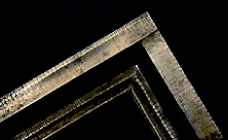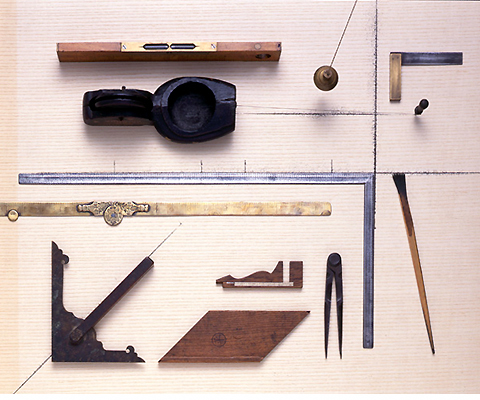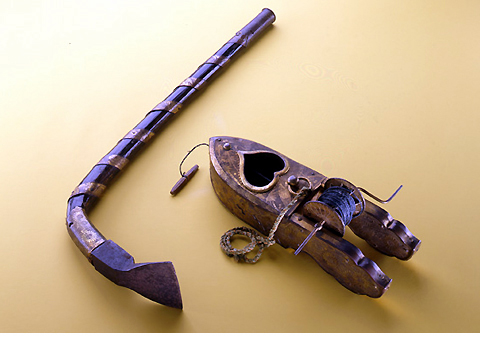Marking Tools [sumikake-dougu]
Sumikake-dogu
Sumikake-dogu

To create a building, we process timber (referred to as timber) according to the location of use. It is necessary to measure the length, angle, etc. to process the materials, and to assemble the processed materials, the horizontal and vertical parts of the materials must be viewed. In addition, there is also the work of drawing the measured results and writing symbols (this work is called inking). The tools used in these series of tasks are collectively called Marking Tools.

Marking Tools group statue (including Chinese tools)
The ink pot, sumisashi, and kushaku also became tools for design and drafting at the site, and were important tools that symbolize the advanced skills of carpenters, so it was indispensable as tools to decorate during ceremonies. Legendary items may be left as ritual tools in old shrines and temples or traditional companies. Among them, the ritual tools dedicated by the Shogunate Daiburyo and Kora Bungomori, which are transmitted to Nikko Toshogu Shrine, are known to be designated as national treasures along with the buildings.

Ritual tools of the Edo period
There are various types of Marking Tools, such as ink pots, ink shashi, and kushaku, winding, fastening, osa Ruler, and mouth drawing. These can be broadly divided into ink tools, horizontal and vertical tools, angle tools, length tools, and curves. Below, we will explain the features individually with photos.
Basic information
Special Exhibition
Permanent exhibition